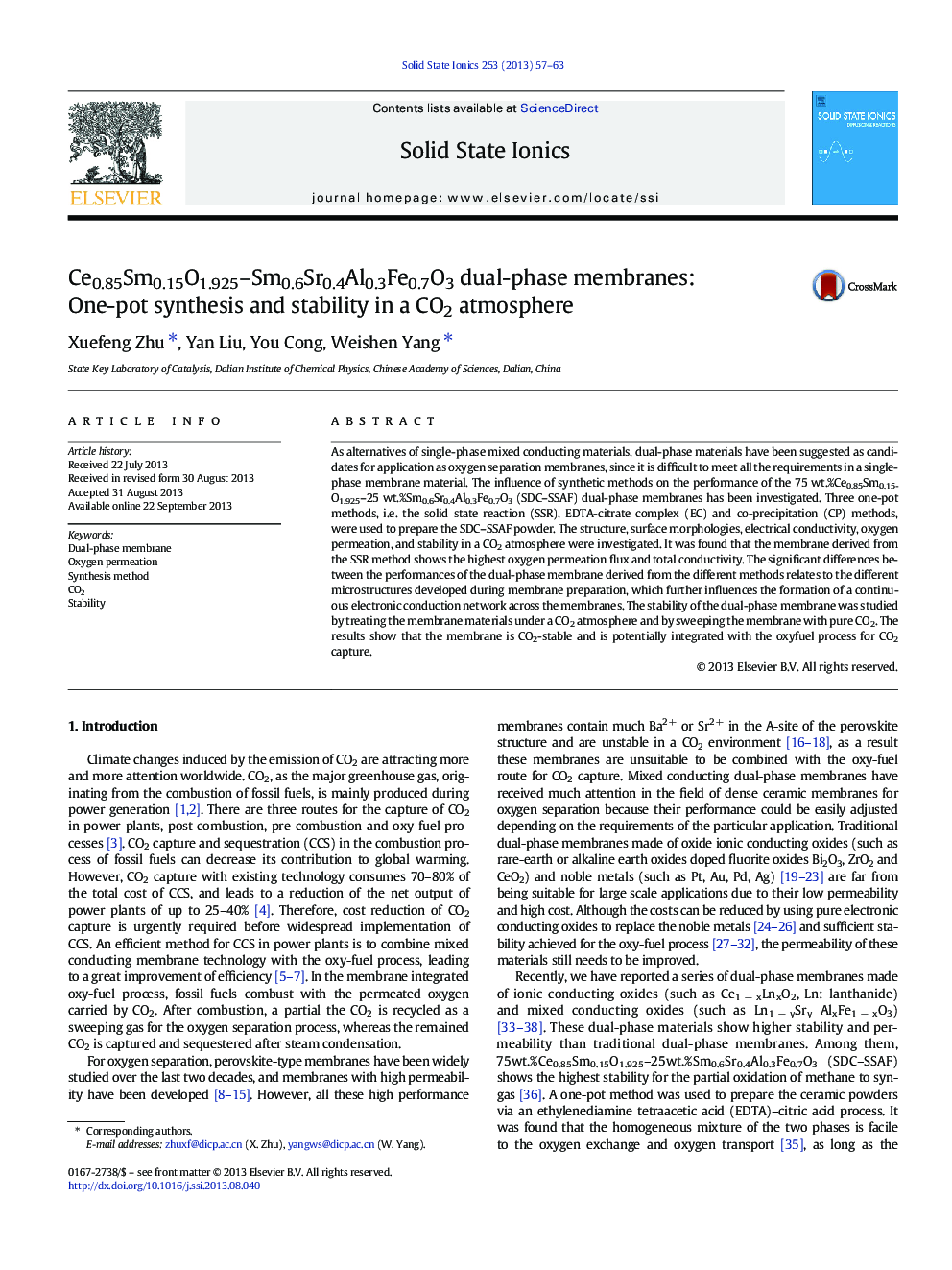| Article ID | Journal | Published Year | Pages | File Type |
|---|---|---|---|---|
| 1297937 | Solid State Ionics | 2013 | 7 Pages |
•Three one-pot methods were comparatively investigated for the powders synthesis.•Membranes derived from solid state reaction method show the highest permeation flux.•Microstructure influences the formation of continuous electronic conduction network.•The membrane shows CO2-stable and high flux swept by CO2.
As alternatives of single-phase mixed conducting materials, dual-phase materials have been suggested as candidates for application as oxygen separation membranes, since it is difficult to meet all the requirements in a single-phase membrane material. The influence of synthetic methods on the performance of the 75 wt.%Ce0.85Sm0.15O1.925–25 wt.%Sm0.6Sr0.4Al0.3Fe0.7O3 (SDC–SSAF) dual-phase membranes has been investigated. Three one-pot methods, i.e. the solid state reaction (SSR), EDTA-citrate complex (EC) and co-precipitation (CP) methods, were used to prepare the SDC–SSAF powder. The structure, surface morphologies, electrical conductivity, oxygen permeation, and stability in a CO2 atmosphere were investigated. It was found that the membrane derived from the SSR method shows the highest oxygen permeation flux and total conductivity. The significant differences between the performances of the dual-phase membrane derived from the different methods relates to the different microstructures developed during membrane preparation, which further influences the formation of a continuous electronic conduction network across the membranes. The stability of the dual-phase membrane was studied by treating the membrane materials under a CO2 atmosphere and by sweeping the membrane with pure CO2. The results show that the membrane is CO2-stable and is potentially integrated with the oxyfuel process for CO2 capture.
